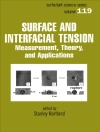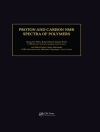Fundamentals of Analytical Toxicology is an integrated introduction to the analysis of drugs, poisons, and other foreign compounds in biological and related specimens. Assuming only basic knowledge of analytical chemistry, this invaluable guide helps trainee analytical toxicologists understand the principles and practical skills involved in detecting, identifying, and measuring a broad range of compounds in various biological samples. Clear, easy-to-read chapters provide detailed information on topics including sample collection and preparation, spectrophotometric and luminescence techniques, liquid and gas-liquid chromatography, and mass spectrometry including hyphenated techniques.
This new edition contains thoroughly revised content that reflects contemporary practices and advances in analytical methods. Expanding the scope of the 1995 World Health Organization (WHO) basic analytical toxicology manual, the text includes coverage of separation science, essential pharmacokinetics, xenobiotic absorption, distribution and metabolism, clinical toxicological and substance misuse testing, therapeutic drug monitoring, trace elements and toxic metals analysis, and importantly the clinical interpretation of analytical results.
Written by a prominent team of experienced practitioners, this volume:
* Focuses on analytical, statistical, and pharmacokinetic principles
* Describes basic methodology, including colour tests and immunoassay and enzyme-based assays
* Outlines laboratory operations, such as method validation, quality assessment, staff training, and laboratory accreditation
* Follows IUPAC nomenclature for chemical names and recommended International Non-proprietary Name (r INN) for drugs and pesticides
* Includes discussion of ’designer drugs’ (novel pharmaceutical substances NPS)
Fundamentals of Analytical Toxicology: Clinical and Forensic, 2nd Edition is an indispensable resource for advanced students and trainee analytical toxicologists across disciplines, such as clinical science, analytical chemistry, forensic science, pathology, applied biology, food safety, and pharmaceutical and pesticide development.
Innehållsförteckning
Preface
Health and Safety
Nomenclature, Symbols, and Conventions
Uniform Resource Locators
Amount Concentration and Mass Concentration
Acknowledgements
List of Abbreviations
Section A. The Basics
Chapter 1. Analytical Toxicology: Overview
Chapter 2. Sample Collection, Transport, and Storage
Chapter 3. Basic Laboratory Operations
Chapter 4. Aspects of Sample Preparation
Chapter 5. Colour Tests, and Spectrophotometric and Luminescence Techniques
Chapter 6. Immunoassays and Related Assays
Section B. Separation Science
Chapter 7. Separation Science: Theoretical Aspects
Chapter 8. Planar Chromatography
Chapter 9. Gas Chromatography
Chapter 10. Liquid Chromatography
Chapter 11. Supercritical Fluid Chromatography
Chapter 12. Capillary Electrophoretic Techniques
Chapter 13. Mass Spectrometry
Chapter 14. Ion Mobility Spectrometry
Section C. Essential Pharmacokinetics
Chapter 15. Absorption, Distribution, Metabolism, and Excretion of Xenobiotics
Chapter 16. Pharmacokinetics
Section D. Analytical Toxicology
Chapter 17. Toxicology Testing at the Point of Contact
Chapter 18. Laboratory Testing for Substance Misuse
Chapter 19. General Analytical Toxicology
Chapter 20. Therapeutic Drug Monitoring
Chapter 21. Trace Elements and Toxic Metals
Chapter 22. Clinical Interpretation of Analytical Results
Index
Om författaren
Robert J Flanagan, Precision Medicine, King’s College Hospital NHS Foundation Trust, UK, and Specialised Clinical Chemistry, Sheffield Teaching Hospitals NHS Foundation Trust, UK.
EVA CUYPERS, Maastricht Multimodal Molecular Imaging Institute, University of Maastricht, The Netherlands, and KU Leuven Toxicology and Pharmacology, Belgium.
HANS H. MAURER, Department of Experimental and Clinical Toxicology, Saarland University, Germany.
ROBIN WHELPTON, Formerly School of Biological and Chemical Sciences, Queen Mary University of London, UK.












